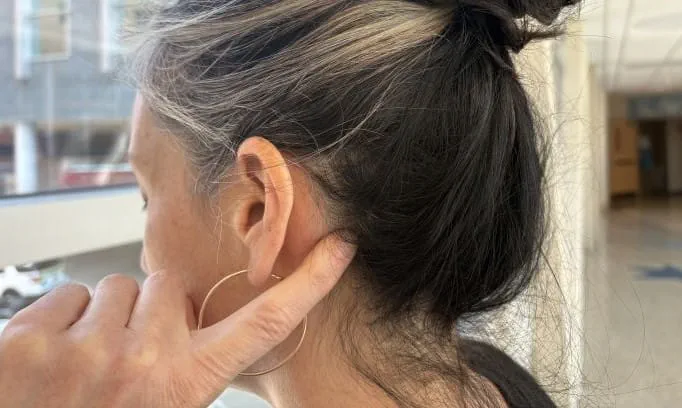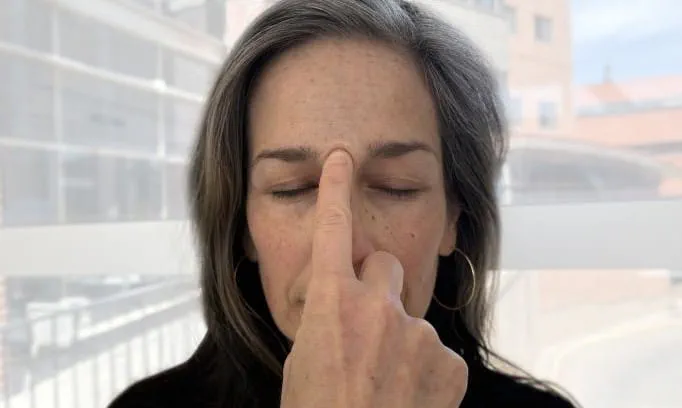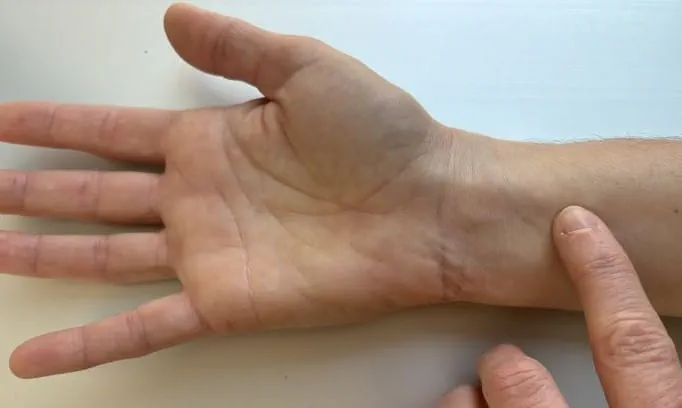
THRIVE
How to use acupressure points to fall asleep naturally
Posted May 5, 2025
- Acupressure can help reduce insomnia and promote restful sleep.
- Acupressure can help with sleep by balancing the body's energy flow.
- Acupressure can slow your heart rate and relieve muscle tension.
Quality sleep is important for physical and mental health — but getting it can be elusive. Everything from your inner voice to your surroundings can work against a night of catching good z’s.
Long before the bright lights and busyness of our modern world, acupressure and other practices involving touch, have been used for centuries to promote a restful night's sleep.
How acupressure works
Your body is thought to have an intricate, interconnected network of vessels called meridians that carry an energy known as qi. This qi energy — pronounced “chee” — flows with blood throughout the body. It’s believed that pain and disease can occur when there is either too much or too little energy and blood flowing through a particular meridian. Acupressure helps to regulate these qi energy channels.
How acupressure helps you sleep
Acupressure can help with sleep by balancing the body's energy flow. When pressure is applied to specific points, acupressure can help calm your mind, slow your heart rate and relieve muscle tension — all things that contribute to more restful sleep.
Pressure points for sleep
Here are four pressure points and directions for properly applying them:

Shenmen (HT7) – “Spirit Gate”
This pressure point is on the inner wrist, in the crease, near the base of the pinky finger. Applying pressure to this point can help calm the mind and reduce overthinking.
Use your thumb to gently press the point in circular motions for 1-2 minutes on each wrist. Do this practice 30 minutes before bed.

Anmian – “Peaceful Sleep”
This point is behind the ear, just above the base of the skull, in the soft depression. Pressure here can help relieve stress, anxiety and insomnia. It’s known to promote deep, restful sleep.
Use gentle circular pressure for 2-3 minutes on both sides. Perform this acupressure technique while lying down at bedtime.

Yin Tang - "Third Eye Point”
This area is between the eyebrows, slightly above the nose bridge. Applying pressure here can help relieve stress and tension, calm an overactive mind and promote sleep.
Use your index or middle finger to apply gentle, circular pressure to the area for 1-2 minutes. Add deep breathing for enhanced relaxation.

Neiguan (PC6) – “Inner Gate”
This is the area on the inner wrist, about three finger widths below the wrist crease, between the tendons. Pressure here can help calm the heart and reduce anxiety. It promotes sleep by relieving stress.
Apply firm, steady pressure with your thumb for 1-2 minutes on each wrist. Increase effectiveness by pairing this acupressure practice with deep breathing.
How to use acupressure
- Practice acupressure daily until falling asleep is easier.
- Continue the practice to maintain the improvements.
- For enhanced relaxation, pair acupressure with other natural sleep remedies.
If acupressure doesn’t improve your sleep, it’s important to look at other contributing factors and consider additional remedies. Get help from your primary care doctor and try the home remedies listed below.
When not to use acupressure for sleep
Talk with a provider before trying acupressure if you’re pregnant, bruise easily or if you have a chronic disease, such as a severe digestive disorder. Consult a doctor if you’ve been through a recent surgery, or if you have a bone fracture or a healing wound. Also, avoid pressure point areas that have any cuts, bruises and infections.
Additional ideas to help you fall asleep naturally
Sleep hygiene refers to the sleep habits, good or bad, you develop over time. Good habits promote restful nights and daytime alertness. They’re essential for maintaining cognitive function, emotional well-being and physical recovery.
Poor sleep habits are linked to things like increased inflammation, higher blood pressure and a greater risk of chronic conditions such as heart disease and diabetes.
These natural sleep methods can be done with or without acupressure to improve sleep hygiene:
- Get morning sun. Exposure to natural light early in the day helps regulate your circadian rhythm, making it easier to fall asleep at night. Aim for 15-30 minutes of morning sunlight.
- Limit naps. If you nap, do it earlier in the day and for only a short time. Don’t sleep more than 20-30 minutes.
- Avoid late-day stimulants. Heavy meals, spicy foods and alcohol close to bedtime can disrupt digestion and disturb sleep. Stop eating for a couple of hours before you settle down for the night.
- Limit screen time before bed. Blue light from phones, tablets and computers suppresses melatonin production, making it harder to fall asleep. Avoid using these electronic devices at least one hour before bed.
- Create a consistent sleep schedule. Go to bed and wake up at the same time every day, even on weekends. This regulates your circadian rhythm, making it easier to fall asleep and wake up naturally.
- Optimize your sleep environment. Keep your bedroom cool, around 60–67°F, to help promote deeper sleep. Find ways to make the room dark and quiet. Use a mattress and pillow that support your spine.
- Establish relaxation rituals. Develop a routine for winding down the day. Consider stretching, progressive muscle relaxation and breathwork to relax your body and mind. Add calming scents like lavender or cedarwood essential oils to increase effectiveness.
-
Try acupuncture
Learn more -
Penny George™ Institute for Health and Healing
Learn more
MORE ARTICLES LIKE THIS
Get fun, inspiring, provider-reviewed articles sent to your inbox.
Sign up for our email newsletter




